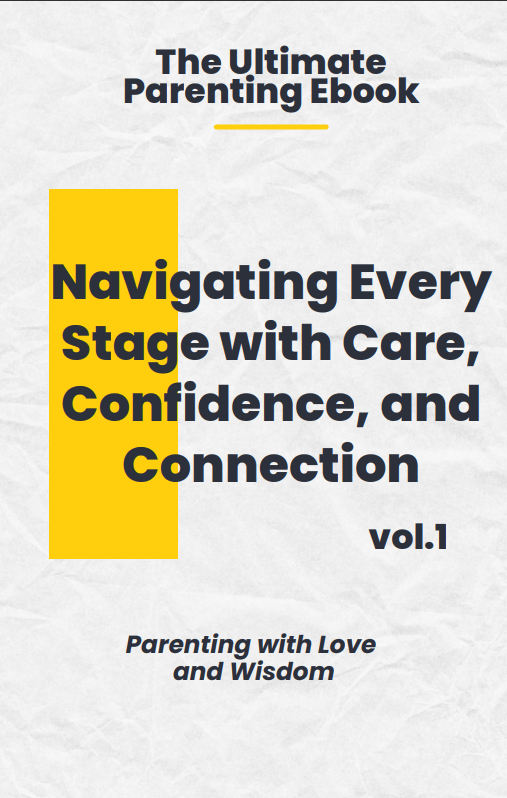Learn how to handle discipline and ADHD in 2024 with 6 practical strategies. Expert-backed solutions to help your child succeed at home and school.

Discipline and ADHD are two topics that often go hand-in-hand when discussing child behavior and development. According to the Centers for Disease Control and Prevention (CDC), an estimated 7 million children in the United States have been diagnosed with Attention-Deficit/Hyperactivity Disorder (ADHD) at some point in their lives. This accounts for approximately 9.4% of children aged 2-17 years. These numbers highlight a significant portion of the population, indicating the importance of understanding how to manage discipline and ADHD effectively. In this guide, we will delve into six practical solutions that can help parents and educators create a structured and supportive environment for children with ADHD.
In This Blog
ToggleWhat is ADHD?
ADHD is a condition affecting neurodevelopment that involves symptoms such as difficulty focusing, excessive activity, and impulsive behavior. These symptoms can significantly impact a child’s ability to perform well in school, maintain relationships, and follow through with tasks. The CDC reports that boys (15%) are more likely than girls (8%) to be diagnosed with ADHD, and the condition often coexists with other disorders such as anxiety and depression.

Statistics and Prevalence in the U.S.
To grasp the scope of ADHD, consider that in 2022, nearly 11.4% of children aged 3–17 years had been diagnosed with ADHD, reflecting an increase over previous years. This rise underscores the need for effective strategies to manage discipline and ADHD. Parents and educators face unique challenges in balancing structure and support for these children, making it essential to explore practical, research-backed solutions.
Impact on Children’s Behavior and Learning
Children with ADHD often struggle with maintaining attention, following instructions, and controlling impulses. These difficulties can lead to academic challenges, social issues, and behavioral problems. Understanding the nuances of ADHD and its impact on behavior is crucial for implementing effective discipline strategies.
The Challenges of Discipline and ADHD
Discipline and ADHD require a unique approach, as traditional discipline methods often fall short. Children with ADHD may not respond well to conventional punishment or reward systems, necessitating tailored strategies that address their specific needs.

Why Traditional Discipline Methods Often Fail
Traditional discipline methods, such as time-outs or loss of privileges, may not effectively address the root causes of ADHD-related behaviors. These children often require more immediate and consistent feedback to understand the consequences of their actions. Additionally, punishment alone may not teach them the skills they need to improve their behavior.
Common Behavioral Issues Linked to ADHD
Children with ADHD often exhibit behaviors such as impulsivity, hyperactivity, and difficulty paying attention. These behaviors can lead to conflicts with peers, struggles in school, and challenges at home. Addressing these issues requires a comprehensive approach that includes understanding the underlying causes and implementing supportive strategies.
Emotional and Psychological Aspects for Parents and Children
The emotional and psychological toll of managing discipline and ADHD can be significant for both children and parents. Children may feel frustrated, misunderstood, or stigmatized, while parents may experience stress, guilt, or helplessness. Recognizing these emotional aspects is essential for creating a supportive environment that fosters positive behavior changes.
Here are a Few of the Most Effective Practical Solutions

Practical Solution 1: Establishing Clear and Consistent Rules
Establishing clear and consistent rules is a cornerstone of effective discipline for children with ADHD. Consistency helps these children understand expectations and reduces confusion and anxiety.
Importance of Consistency
Consistency in rules and consequences provides a stable framework that children with ADHD can rely on. When rules are applied consistently, children learn what is expected of them and are more likely to adhere to these expectations. Inconsistent discipline, on the other hand, can exacerbate behavioral issues and lead to confusion.
Examples of Effective Rules for Children with ADHD
Effective rules for children with ADHD should be simple, clear, and achievable. For example:
- “Finish homework before playing video games.”
- “Use a calm voice when speaking inside the house.”
- “Put toys away after playing.”
These rules should be reinforced with immediate and consistent consequences, both positive and negative, to help children understand the relationship between their actions and outcomes.
Case Studies or Personal Anecdotes from Parents
Consider the experience of Sarah, a mother of a 10-year-old boy with ADHD. By establishing clear rules and consistently enforcing them, she noticed a significant improvement in her son’s behavior. He began to understand expectations better and responded positively to the structure. Sarah’s story highlights the importance of consistency in managing discipline and ADHD.
Practical Solution 2: Positive Reinforcement Techniques
Positive reinforcement involves rewarding desirable behaviors to encourage their recurrence. This approach is particularly effective for children with ADHD, who often respond well to immediate and tangible rewards.
Explanation of Positive Reinforcement
Positive reinforcement can include verbal praise, stickers, extra playtime, or other rewards that motivate the child. The key is to reward immediately after the desired behavior to reinforce the connection between the behavior and the reward.
How It Benefits Children with ADHD
Children with ADHD benefit from positive reinforcement because it provides immediate feedback and encourages them to repeat positive behaviors. This method helps build self-esteem and promotes a positive relationship between the child and the parent or teacher.
Real-Life Examples and Success Stories
Consider the case of John, a teacher who implemented a token system in his classroom. Each time a student with ADHD completed an assignment on time or followed class rules, they earned a token. These tokens could be exchanged for small rewards at the end of the week. John observed a significant increase in positive behaviors and a decrease in disruptions, illustrating the effectiveness of positive reinforcement.
Practical Solution 3: Structured Routines
Structured routines provide a predictable environment that can help children with ADHD feel more secure and focused. Routines help minimize distractions and provide a clear framework for daily activities.
Benefits of a Structured Daily Routine
A structured daily routine helps children with ADHD by providing consistency and reducing uncertainty. This predictability can improve focus, reduce anxiety, and enhance overall behavior.
Tips for Creating and Maintaining Routines
Creating a successful routine involves:
- Establishing a daily schedule that includes specific times for waking up, meals, homework, and bedtime.
- Using visual aids, such as charts or calendars, to help children understand and follow the routine.
- Allowing flexibility for unexpected events while maintaining overall consistency.
Insights from Experts and Educators
Dr. Jane Smith, a child psychologist, emphasizes the importance of involving children in the creation of their routines. By allowing them to have a say, children are more likely to adhere to the schedule and feel a sense of ownership. Dr. Smith’s insights underscore the value of collaboration in managing discipline and ADHD.
Practical Solution 4: Effective Communication Strategies
Effective communication is crucial in managing discipline and ADHD. Clear, empathetic communication helps children understand expectations and feel supported.
Techniques for Clear and Empathetic Communication
Effective communication techniques include:
- Using simple, direct language.
- Making eye contact to ensure understanding.
- Asking the child to repeat instructions to confirm comprehension.
Role of Active Listening and Patience
Active listening involves fully focusing on the child, understanding their perspective, and responding thoughtfully. Patience is essential, as children with ADHD may need extra time to process information and respond.
Testimonials from Families Who Have Succeeded
Mary, a parent of a child with ADHD, found that active listening transformed her relationship with her son. By giving him her full attention and responding with empathy, she noticed a decrease in behavioral issues and an improvement in their communication. Mary’s experience highlights the power of effective communication in managing discipline and ADHD.
Practical Solution 5: Tailored Educational Approaches
Tailored educational approaches, such as Individualized Education Programs (IEPs) and 504 Plans, can provide the necessary support for children with ADHD to succeed academically.
Individualized Education Programs (IEPs) and 504 Plans
IEPs and 504 Plans are designed to meet the unique needs of students with disabilities, including ADHD. These plans outline specific accommodations and modifications to help students succeed in the classroom.
Strategies for Collaboration with Teachers and Schools
Collaboration between parents, teachers, and school administrators is crucial for the success of IEPs and 504 Plans. Strategies include:
- Regular communication and meetings to discuss progress and adjustments.
- Sharing insights and strategies that work at home with teachers.
- Advocating for the child’s needs and ensuring they receive the appropriate support.
Stories of Academic Improvement Through Tailored Approaches
Jessica, a high school student with ADHD, saw a significant improvement in her grades after her IEP was implemented. With accommodations such as extended test time and preferential seating, she was able to focus better and perform to her potential. Jessica’s story demonstrates the positive impact of tailored educational approaches on discipline and ADHD.
Practical Solution 6: Utilizing Professional Support
Professional support from therapists, counselors, and ADHD coaches can provide valuable guidance and resources for managing discipline and ADHD.
Importance of Seeking Professional Help
Seeking professional help can provide specialized strategies and support tailored to the child’s needs. Professionals can offer insights that parents and teachers may not have considered.
How to Find the Right Support Services
Finding the right support services involves:
- Researching local therapists and counselors with experience in ADHD.
- Asking for recommendations from doctors, schools, or support groups.
- Ensuring the professional’s approach aligns with the family’s values and needs.
Real-Life Impact of Professional Guidance on Discipline and ADHD
Tom, a father of a child with ADHD, found that working with an ADHD coach significantly improved his son’s behavior. The coach provided practical strategies for managing impulsivity and improving focus, leading to a more harmonious home environment. Tom’s experience underscores the value of professional support in managing discipline and ADHD.
Conclusion
In conclusion, managing discipline and ADHD requires a comprehensive approach that includes clear and consistent rules, positive reinforcement, structured routines, effective communication, tailored educational approaches, and professional support. These practical solutions can help parents and educators create a supportive environment that fosters positive behavior changes and academic success.
By implementing these strategies, you can help your child navigate the challenges of ADHD and develop the skills they need to thrive. If you have any inquiries or would like to share your experiences, feel free to leave a comment below. Your insights and stories can provide valuable support and encouragement to others on this journey.
You may also be interested in : Discipline ADHD: 10 Signs to Spot and How to Address Them
FAQs
1. What is ADHD?
ADHD, or Attention-Deficit/Hyperactivity Disorder, is a neurodevelopmental disorder characterized by inattention, hyperactivity, and impulsivity. It affects a child’s ability to focus, follow instructions, and control impulses.
2. How does ADHD impact discipline?
Children with ADHD may struggle with traditional discipline methods due to difficulties with attention and impulse control. Tailored strategies are needed to address their unique challenges effectively.
3. What are some effective discipline strategies for children with ADHD?
Effective strategies include clear and consistent rules, positive reinforcement, structured routines, effective communication, tailored educational approaches, and professional support.
4. Why are structured routines important for children with ADHD?
Structured routines provide predictability, reduce anxiety, and help children with ADHD focus better. Consistent daily schedules help them understand expectations and improve behavior.
5. How can positive reinforcement help manage ADHD?
Positive reinforcement rewards desirable behaviors, encouraging their recurrence. It provides immediate feedback and builds self-esteem, making it an effective tool for managing ADHD.
6. What role do IEPs and 504 Plans play in supporting children with ADHD?
IEPs and 504 Plans provide accommodations and modifications tailored to the child’s needs, helping them succeed academically by addressing specific challenges related to ADHD.
7. How can parents communicate effectively with children with ADHD?
Effective communication involves using simple, direct language, making eye contact, and practicing active listening. Patience and empathy are crucial for understanding and supporting the child’s needs.
8. Why is professional support important for managing ADHD?
Professional support offers specialized strategies and resources tailored to the child’s unique needs. Therapists, counselors, and ADHD coaches can provide valuable guidance for parents and educators.
9. What are some common misconceptions about ADHD?
Common misconceptions include the belief that ADHD is just bad behavior or a lack of discipline. ADHD is a neurodevelopmental disorder that requires understanding and tailored strategies.
10. How can teachers support students with ADHD in the classroom?
Teachers can support students with ADHD by implementing IEPs or 504 Plans, using positive reinforcement, maintaining structured routines, and fostering open communication with parents and students.




